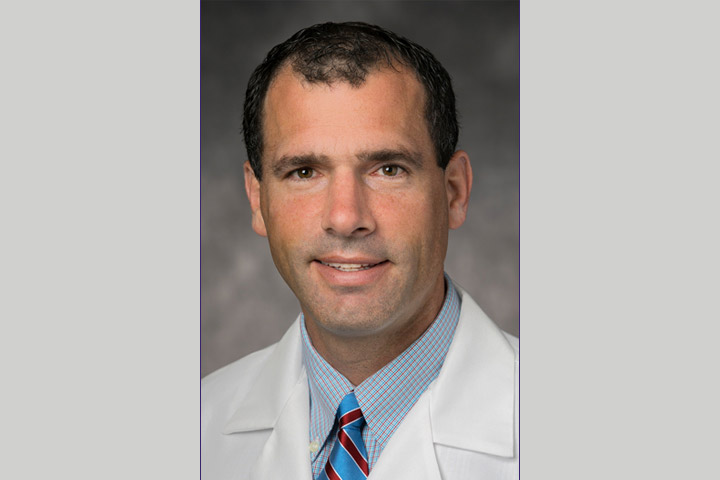What Happens When Pancreatic Cancer Clinical Trials Fail?

For every approved cancer treatment, there are countless others that didn’t make it through the clinical trial process.
These include several potential pancreatic cancer therapies that hit headlines in 2019. Halozyme Therapeutics discontinued the development of PEGylated recombinant human hyaluronidase (PEGPH20) after the investigational drug failed to meet the primary endpoint in a phase III trial in metastatic pancreatic cancer.
Celgene also experienced a clinical setback last year when its popular chemotherapy drug nab-paclitaxel failed a pivotal phase III study when combined with gemcitabine as an adjuvant treatment in pancreatic cancer. And the trial of AbbVie and Johnson & Johnson’s Imbruvica (ibrutinib) with chemotherapy failed to improve progression-free or overall survival in a phase III study of metastatic pancreatic cancer.
The fact is that a staggering 97 percent of oncology trials fail to reach FDA approval. What makes a trial a failure, and what happens to patients on the trial?
Why Clinical Trials Fail
Clinical trials are developed with specific goals to meet. In phase I trials, the main concern is safety of the treatment or drug, while phase II trials consider efficacy (effectiveness) and safety. Phase III trials compare the new treatment or drug to existing ones, to see which is more effective and safe. Other criteria come into play for a trial to succeed, and so there are any number of factors that can lead to a trial being deemed a failure.
Efficacy: The biggest source of trial failure is inability to demonstrate efficacy. The drug might not work, or it might work for only some patients but not enough, or it might not work for long enough to be considered better than drugs that are already available. There may also be problems due to a flawed study design, an inappropriate statistical endpoint, or a sample size that is too small (which may result from strict exclusion criteria, patient dropouts, and insufficient enrollment).
Safety: Other trials fail due to safety concerns—a drug turns out to cause more harm than good, or it has dangerous side effects. These problems will often occur in phase I or II trials. But sometimes safety issues might only become apparent with the larger populations associated with phase III studies, or at post-approval (phase IV) stages.
Funding: Some trials may end simply because their sponsors have run out of money to continue funding them. The costs required to complete the entire development process from discovery to market vary, but they can exceed $2.5 billion. In the United States, the cost of complying with an increasing regulatory burden is also impactful, necessitating more staff, storage, and financial outlay, according to a review article by David B. Fogel.
What About the Patients on the Trial?
What happens to patients on such trials? Can they continue to receive the investigational treatment if it shows individual benefit? The answer is: sometimes.
International ethical guidelines, such as the Declaration of Helsinki, include the right to post-trial access for patients, but there is a lack of firm guidance as to what this should entail. Often, it depends on the pharmaceutical company running the trial.
In 2009, Pfizer convened a meeting at Harvard University with a group of diverse stakeholders from the pharmaceutical industry, academia, nonprofits, and government agencies. It culminated in a report of recommendations that led to the establishment of the Multi-Regional Clinical Trials (MRCT) Center and a 41-member international multi-stakeholder workgroup. Additional reports included a framework of post-trial responsibilities for continued access to investigational medicines released in 2017.
“A decision as to whether there is a compelling duty to provide continued access will involve a balance between the benefits and risks to individual participants and those to the patient population, informed by the certainty, robustness and durability of the evidence upon which such determinations are made,” the report states.
When there is discordance between the individual and the study population, additional points to consider include:
- Is the disease under study serious or life-threatening, and/or will the research participants be adversely impacted if the medicine were to be discontinued?
- Does the investigational medicine address an unmet medical need in that there are no suitable therapeutic alternatives available to participants?
- Is there alternative access to the investigational medicine?
- Will the provision of continued access to the investigational medicine affect the viability of the research or the ability to complete the trial or other trials being conducted to develop the new medicine?
If drug development is abandoned due to the emergence of safety issues, the sponsor should not provide continued access to that investigational medicine except under very rare circumstances, the framework states. If the reason is due to business or strategic reasons, sponsor post-trial responsibilities may persist, but sponsors are not compelled to manufacture additional quantities of investigational medicine if that product will never be marketed or pursued.
Writing in The Lancet, Hae Lin Cho, Marion Danis, and Christine Grady argue that more should be done for all clinical trial patients, including those who do not benefit from the investigational medication. They suggest that post-trial care should include: informing participants of results, helping to arrange clinical care or social services after a trial’s conclusion, referral to appropriate follow-up care in the healthcare sector or to another trial, or provision of alternative interventions to the investigational medication.
“Post-trial care is necessary to prevent the exploitation of participants with insufficient access to health care, who have poorer health outcomes than people with full access to health care,” they write. “Even with post-trial access, uninsured participants might not have access to continued monitoring, treatment for complications, or existing treatment alternatives.”
Many companies, such as Celgene and Boehringer Ingelheim, are becoming more transparent about their post-trial access policies.
If you are considering participating in a trial and wonder what provisions will be made when it is over, read those consent documents carefully. They should detail whether or in what circumstances you can expect to continue to receive treatment.
Learning from Failure
Even failed trials are worthwhile. Without them, questions about safety and efficacy of potential new treatments would go unanswered, and potentially valuable treatments would never reach patients. “Advancing research and conducting clinical trials comes with the unfortunate reality of not always being successful,” notes Kevin Williams, Chief Medical Officer for Rare Disease at Pfizer.
His team recently experienced a significant disappointment when his phase III trial for rivipansel, a potential treatment for sickle cell disease (SCD), did not meet its study endpoints. “Both professionally and personally, this news was hard to hear, especially knowing that people with SCD have such limited treatment options available to them,” Williams said. “However, it’s still critical for this research to happen to bring new treatment advances to those in need.”
While people may think that research studies are a “last-ditch effort,” participating in a clinical trial can actually be the best starting point in a person’s care plan, according to clinical trial consultant Erica Bersin, president of ERO Health Communications. “When you join a study, there is very close monitoring by the research team at regular intervals,” she said. “Without the people that graciously give their time, none of the treatments for cancer and other diseases or disorders would exist.”
For metastatic breast cancer survivor Lesley Stephen, a discontinued trial for a dual tyrosine kinase inhibitor was anything but a failure. After her cancer spread to her lungs, liver, bones, and brain, she was told to pack her bags and get her affairs in order. But she nabbed the last spot in a 36-person phase I clinical trial and is thriving several years later. The trial never progressed past the early stages because the drug failed to show significant benefit over standard-of-care, but Lesley was allowed to continue the treatment because of its overwhelming benefit to her.
“I could tell within a fortnight that it was working. I’ve been on it ever since,” said the 48-year-old mother of four from Edinburgh, Scotland. “I still have a tiny tumor on my liver, but I feel fantastic. It’s been a miracle.”
If you are on a trial that has failed, you can still go back to your doctor to discuss further treatment, or seek another opinion. There may be a different variant of the trial still active and recruiting, or another new clinical trial for you.





